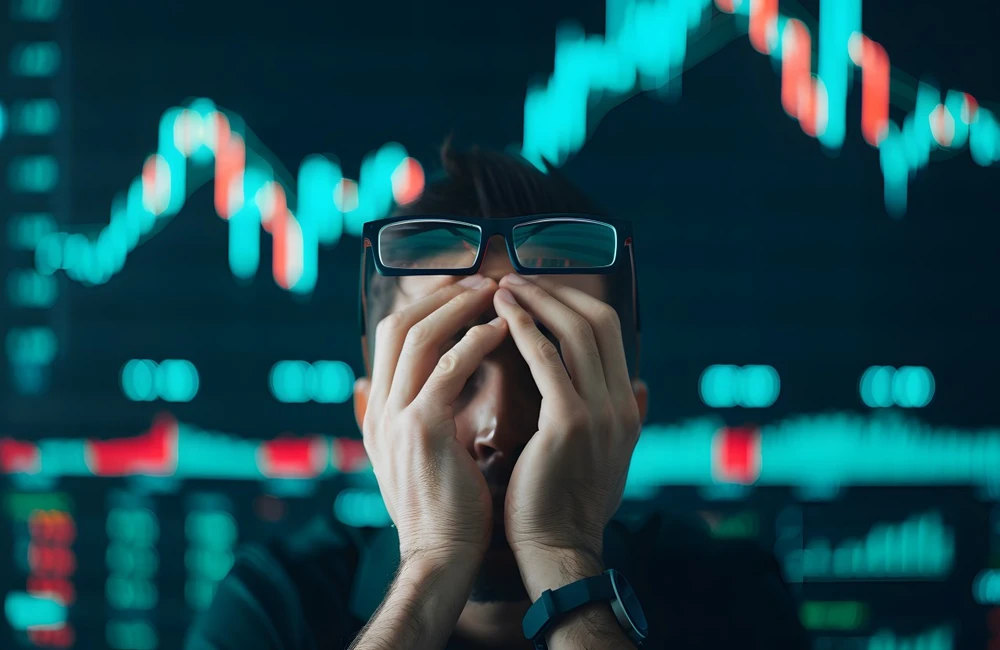ASX futures were 33 points or 0.5 per cent lower at 6636 by 8:00 am on Thursday, suggesting a decline at the open.
The Nasdaq Composite rose 1.6 percent, and shares of Netflix rose 7.4 percent after the company said it lost fewer subscribers in the last quarter than it had anticipated. The S&P 500 rose 0.6%. The Dow Jones Industrial Average was up 0.2 percent. All three indexes were up in consecutive trading sessions and were trading at their highest levels since early June.
Shares in technology, communications and consumer discretionary stocks rose after investors dipped their toes into riskier areas of the market. For most of the year, interest rate increases have pressured the value of stocks that rely more on growth than near-term cash flows. Some of that pressure has subsided in recent weeks.
“If you look at the rate at which the 10-year U.S. Treasury yield has been zipping around us, inflation expectations that have been lowering, and earnings season that thus far has been less bad than expected,” said Art Hogan, chief market strategist at B. Riley FBR Inc. “Some of the most beaten up areas of the market have been technology and consumer services. Now risk appetite is spilling into those regions.”
On the local share market, the S&P/ASX 200 closed 1.65% higher at 6759.2 on Wednesday — its biggest single-day increase in more than three weeks.
All 11 sectors gained ground as the benchmark index took its cue from US stocks, which were buoyed by the latest round of company earnings reports.
Tech and material stocks were standouts. Megaport soared 23% on its first quarterly earnings profit, with Block, WiseTech and Xero adding between 4.4% and 5.9%.
Iron-ore miners BHP, Rio Tinto and Fortescue gained 1.4% to 5.2%, with lithium and steel stocks outpacing them.
The major banks lifted themselves but underperformed most other financials, including Zip Co, wealth managers and smaller lenders. It was the ASX 200’s biggest one-day gain since June 27.
Commodities jumped after recent selling, with Iron ore lifting to $100.05 and Brent fell 0.4% to $106.92 per barrel, gold fell 0.3 percent to US$1,712.10.
In terms of local bond markets, the Australian 2yr government bond yield lifted a little to 2.77%, and the 10yr yield upticked to 3.54%. Abroad, the 2 Year US Treasury notes yield went down to 3.23% and the US 10 Year Treasury notes also eased to 3.03%.
The Australian dollar is 0.3 percent lower at 68.76 US cents. The Wall Street Journal Dollar Index, which measures the U.S. unit against 16 others, fell to 99.10.
Asia
China stocks rose, following a surge in other Asian stocks as fears of an imminent global recession waned. The Shanghai Composite Index, a benchmark, gained 0.8% to 3304.72, the Shenzhen Composite advanced 0.7% to 2210.46 and the ChiNext Price Index rose 0.5% to 2765.16. Some market participants may adopt a wait-and-see approach in the short term, as China held its one-year and five-year loan prime rates, according to IG market strategist Yeap Jun Rong in a note, who notes economic reopening is still happening at a gradual pace. Shipping stocks were up, with Cosco Shipping Development rising 2.7% and China Merchants Energy Shipping gaining 4.3%.
The Hang Seng Index in Hong Kong added 1.1% to close at 20890.22, recovering from losses in the prior session, as tech and consumer-related sectors rallied. The local market jumped alongside regional equities, which followed an overnight bounce on Wall Street as investors cheered earnings. SenseTime, an AI specialist, rebounded 11% after it notched its inaugural share repurchase post-IPO. Shares of Alibaba Group rose 2.3 percent, and Meituan added 3.0 percent. Other gainers included hot-pot chain operator Haidilao, which climbed 4.1%, and Anta Sports, which rose 2.5%. Property developers remained under pressure, with Longfor Group and China Overseas Land falling by more than 2.5% apiece.
Japan’s Nikkei 225 jumped 2.7%.
Europe
European markets fell on continued energy-supply concerns triggered by uncertainty over a possible re-launch of a gas pipeline. The pan-European Stoxx Europe 600 and German DAX fell 0.2 percent, while the French CAC 40 lost 0.3 percent. Italy’s FTSE MIB lost 1.6% and Italian financial stocks were among the biggest pan-European fallers as political turmoil raged on in Rome.
“Headlines that Russia is mulling additional maintenance to its Nord Stream 1 pipeline has put European stocks on the back foot, as traders wonder perhaps whether they can take this risk rebound much further,” writes IG analyst Chris Beauchamp.
London’s FTSE 100 ended Wednesday 0.4% lower at 7267 points in a mixed session which saw investors banking gains on the four-day rally, says IG chief market analyst Chris Beauchamp in a note.
Furthermore, UK’s inflation data also dampened the enthusiasm of dip buyers, he says. Scottish Mortgage Investment Trust was the biggest gainer on the index with a 4.8% rise and DS Smith was the biggest loser, down 3.8%.
North America
Technology and other growth stocks rallied on Wednesday, as more companies reported quarterly earnings that were stronger than investors had feared.
The Nasdaq Composite gained 1.6%. The S&P 500 rose 0.6%. The Dow Jones Industrial Average rose 0.2 percent. All three indexes gained for a second session in a row, and they are trading at their highest levels in nearly three months.
Technology, communication and consumer discretionary companies rose as investors snapped up some of the market’s riskier sectors. For a lot of this year, higher interest rates have made stocks that value growth over near-term cash flows less attractive. But some of that pressure has begun to ease in the last month.
“We have a much more subdued 10-year US Treasury yield than we had two weeks ago, since inflation expectations have come down, and earnings season, so far, has been better than feared,” said Art Hogan, chief market strategist at B. Riley FBR Inc. “Technology and consumer services have been some of the most battered areas of the market. This is where risk appetite is getting into those areas now.”
Stocks have whipsawed in recent days during an earnings season that has been under close scrutiny for clues about how the highest inflation in more than four decades and slowing economic growth are influencing companies. Recent results from both Goldman Sachs and Citigroup have exceeded the expectations of Wall Street, even though the banks each reported steep declines in profit.
Netflix announced late Tuesday that it lost fewer subscribers last quarter than it had anticipated, and forecast that it would increase its net new subscribers by 1 million in the current period, defying a pattern of losses during warmer months. Shares were up $14.81, or 7.4 percent, at $216.44, and had risen 14 percent this week, in line for their best performance since July 2020.
“Earnings have been supportive of this idea that growth is not falling off a cliff,” said Fahad Kamal, the chief investment officer at Kleinwort Hambros. “It’s not that a recession appears inevitable. But the companies have been conservative in their guidance.”
Reporting after the market close, Tesla reported the first sequential decrease in quarterly profit in more than a year as it recovers from an extended shutdown of its assembly plant in Shanghai. The electric-vehicle company also said it has sold 75% of the bitcoin it had purchased, just over a year after its investment in the digital currency. Shares were little changed in after-hours trading.
Marketing house Omnicom jumped $2.65, or 3.9%, to $70.06 after it reported better-than-expected revenue and raised guidance, among other strong earnings reports.
Oil services company Baker Hughes lost $2.33, or 8.3 percent, to $25.89 after its CEO said he expects demand to get worse over the next 18 months.
Abbott Laboratories slid $1.70, or 1.6 percent, to $108.23 after saying nutrition sales were hurt by a recall and shutdown in production of some infant formula products despite higher guidance.
Sentiment remains historically negative on Wall Street, though some investors say they view this earnings season as a potential turning point after this year’s plunge in the market.
“Today’s market sentiment is worse than what we saw in the early days of the pandemic; 2008 doesn’t even come close to comparing to the bearishness felt in today’s market,” said Keith Buchanan, portfolio manager at Globalt, an Atlanta-based money manager. “This earning season could be the tipping point for that to start to turn around.”
From his view, Mr. Buchanan says his firm has money to deploy across its strategies, especially into global stocks. “After we see the final flush down or confirmation of a breakout, then we’re looking to get aggressive,” he said.
Beyond that, sales of existing homes dropped in June for a fifth consecutive month, as higher home prices and steeper interest rates weighed on demand from buyers. The median sales price for an existing home hit another record in June as it climbed 13.4 percent from a year earlier, to $416,000.
The yield on the benchmark 10-year Treasury note rose to 3.035% from 3.017% on Tuesday, while in other markets. Yields rise when prices fall. The yield of shorter-dated bonds were also higher, with a 2-year yield at 3.248%. That is what is known as an inverted yield curve and is a well-known recession signal.
The international crude benchmark, Brent, dipped 0.4 percent to $106.92 a barrel, after three straight days of gains.
“Energy prices are pricing macro sentiment. It’s the fact that the likelihood of a recession is much higher,” said Antonio Cavarero, head of investments at Generali Insurance Asset Management.

























